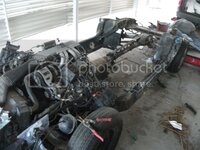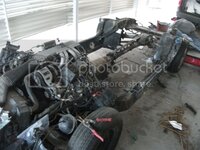69427
The Artist formerly known as Turbo84
I'll admit I like the looks of my '69 better than a C6Z, but to be honest, I can't help lusting for an aluminum frame. I realize the C6 has the advantage of not being a ladder frame, and all the other tunnel and birdcage structural differences, but humor me a moment and throw me a few technical bits on why it's possible or not possible to put an aluminum frame under a C3. All I'm trying to wrap my mind around is a functional replacement, not necessarily an identical shape frame that I wouldn't lose concourse points at the next NCRS convention.
This is just a technical exercise here for an admitted geek.
Thanks,
Mike
Edit: Just got to thinking, my Featherlite trailer has an aluminum frame, carries the Corvette, tools, several sets of tires, and weighs less (@2700#) than the Corvette.
This is just a technical exercise here for an admitted geek.
Thanks,
Mike
Edit: Just got to thinking, my Featherlite trailer has an aluminum frame, carries the Corvette, tools, several sets of tires, and weighs less (@2700#) than the Corvette.
Last edited:




